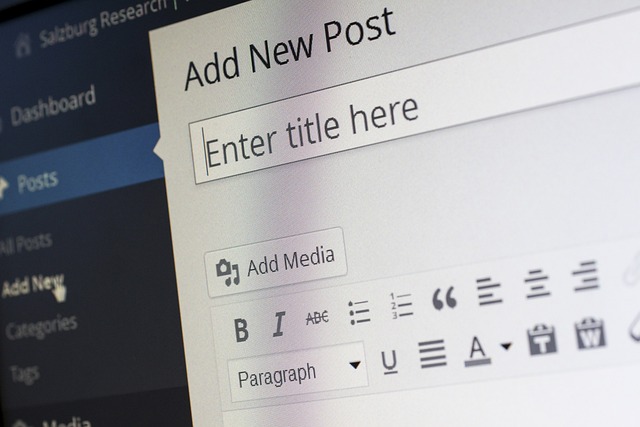Imagine receiving an email that is a jumbled mess of generic text, displayed poorly on your mobile device, and lacking any clear call-to-action. Frustrating, right?
Well, if you want to avoid making these common mistakes in your transactional email strategy, you’ve come to the right place. In this article, we will highlight five crucial errors that can hinder the effectiveness of your transactional emails.
From using generic email templates to neglecting mobile optimization, overlooking email deliverability, ignoring email analytics, and failing to include clear call-to-actions, these missteps can have a significant impact on your customer experience and ultimately, your bottom line.
So, if you want to ensure that your transactional emails are engaging, efficient, and successful, keep reading to discover how to avoid these pitfalls and enhance your email strategy.
Key Takeaways
- Generic email templates diminish effectiveness of transactional email strategy
- Personalization is crucial for engaging recipients and establishing a strong connection
- Mobile optimization is necessary to avoid alienating a significant portion of the audience
- Neglecting email deliverability can impact the success of the email strategy
Using Generic Email Templates
Using generic email templates can lead to a lack of personalization, diminishing the overall effectiveness of your transactional email strategy. Customized content plays a crucial role in engaging your recipients and establishing a strong connection.
By tailoring your emails to individual users, you can create a personalized experience that resonates with them and increases the chances of conversion. Email personalization goes beyond simply addressing recipients by their name; it involves delivering relevant and targeted information based on their preferences and behaviors. Neglecting to implement this level of personalization can result in disengaged customers and missed opportunities.
However, it’s not just about customizing the content; you should also consider optimizing your emails for mobile devices. By neglecting mobile optimization, you risk alienating a significant portion of your audience who primarily access emails on their smartphones or tablets.
Neglecting Mobile Optimization
Neglecting mobile optimization in your email strategy could cost you valuable conversions and frustrate your subscribers. With the majority of people now accessing emails on their mobile devices, it’s crucial to ensure that your emails are mobile responsive.
A poorly optimized email may not display properly on smaller screens, leading to a negative user experience and decreased engagement. Buttons and links may be difficult to click, and the overall layout may appear cluttered and unprofessional. By prioritizing mobile optimization, you can ensure that your emails are visually appealing and easy to navigate on any device, increasing user engagement and ultimately driving more conversions.
However, overlooking email deliverability can undo all your efforts to optimize for mobile.
Overlooking Email Deliverability
When it comes to the success of your transactional email strategy, overlooking email deliverability can have a significant impact.
Ensuring that your emails are actually making it into your recipients’ inboxes is crucial for achieving your desired outcomes.
To improve email deliverability, focus on building a strong sender reputation.
Regularly clean your email list and personalize your emails to increase engagement and avoid being marked as spam.
The Impact of Email Deliverability on Success
Maximizing email deliverability is crucial for the success of your transactional email strategy, as it directly affects the number of recipients who actually receive and engage with your emails. To truly understand the impact of email deliverability on your success, consider the following:
-
Higher email engagement: When your emails reach the inbox, it increases the chances of recipients opening and interacting with them. This leads to higher click-through rates and better overall engagement.
-
Improved email personalization: Deliverability issues can result in your emails not being delivered to the intended recipients, causing a disconnect in your personalization efforts. By ensuring high deliverability, you can deliver relevant and targeted content to your audience.
-
Brand reputation: Consistently landing in the inbox builds trust and credibility with your audience, strengthening your brand reputation.
-
Increased conversion rates: When your emails are successfully delivered, engaged recipients are more likely to convert into customers.
Now that you understand the impact, let’s explore strategies for improving email deliverability.
Strategies for Improving Email Deliverability
Implementing effective strategies to boost email deliverability is like fine-tuning an orchestra, harmonizing different elements to create a seamless and captivating symphony of successful inbox placements. To improve email deliverability and engagement, it’s crucial to focus on two key areas: email personalization and maintaining a healthy sender reputation.
Firstly, personalized emails have a higher chance of resonating with recipients, leading to increased open rates and click-through rates. By segmenting your audience and tailoring your messages to their specific needs and preferences, you can create a more engaging and relevant email experience.
Secondly, maintaining a positive sender reputation is essential for successful inbox placements. Regularly monitoring and optimizing email deliverability metrics such as bounce rates, spam complaints, and unsubscribe rates can help identify and rectify any issues that may negatively impact your sender reputation.
By implementing these strategies, you can significantly improve your email deliverability and engagement. However, ignoring email analytics can lead to missed opportunities and ineffective campaigns.
Transitioning into the next section, let’s explore the importance of leveraging email analytics to enhance your transactional email strategy.
Ignoring Email Analytics
Don’t overlook the power of email analytics; they can provide invaluable insights into your customers’ behaviors and preferences, helping you tailor your transactional email strategy for maximum impact. By measuring the effectiveness of your emails, you can make data-driven decisions and optimize your campaigns to drive better results. Here’s a breakdown of the key email performance metrics you should be monitoring:
| Metric | Description |
|---|---|
| Open Rate | The percentage of recipients who open your email |
| Click-Through Rate | The percentage of recipients who click on links within your email |
| Conversion Rate | The percentage of recipients who complete a desired action |
Analyzing these metrics allows you to identify areas of improvement and make necessary adjustments to your transactional emails. By understanding what resonates with your audience, you can create more engaging content and improve customer satisfaction. So make sure you don’t ignore email analytics; they can be the key to unlocking the success of your transactional email strategy. Now, let’s move on to the next section about failing to include clear call-to-actions.
Failing to Include Clear Call-to-Actions
If you want to see any results from your emails, you better make sure you include clear and compelling call-to-actions that practically slap your readers in the face. Without a strong call-to-action, your recipients may not know what action to take or what you want them to do.
Here are three reasons why clear call-to-actions are essential for improving engagement and optimizing conversions:
-
They guide your readers: By providing clear instructions, you help your recipients understand what steps to take next, increasing their likelihood of engagement.
-
They create a sense of urgency: A well-crafted call-to-action can create a sense of FOMO (fear of missing out), motivating your readers to act immediately.
-
They make it easy: A clear call-to-action removes any guesswork and makes it effortless for your recipients to take the desired action.
By including compelling call-to-actions, you can significantly improve engagement and conversions in your transactional emails. However, neglecting the customer experience can undermine all your efforts to drive action.
Neglecting the Customer Experience
Neglecting the customer experience can have detrimental effects on the overall effectiveness of your email campaigns. To ensure customer satisfaction, it’s crucial to prioritize the customer experience in your transactional email strategy.
Personalized messages play a significant role in this aspect. When customers receive generic, impersonal emails, they’re less likely to engage with your content or take desired actions. By tailoring your messages to each individual, you can create a more engaging and meaningful experience.
Personalization shows that you value your customers and understand their specific needs and preferences. This approach can lead to higher open rates, click-through rates, and ultimately, more conversions.
Don’t underestimate the power of a positive customer experience in driving the success of your transactional email campaigns.
Frequently Asked Questions
How can I customize my transactional email templates to make them more personalized for my recipients?
To make your transactional email templates more personalized, it’s crucial to understand the importance of personalization in transactional emails.
Start by using the recipient’s name and addressing them directly.
Additionally, leverage customer data to create dynamic content tailored to their preferences and behaviors.
Incorporate personalized product recommendations, order details, and relevant information.
This will not only improve the customer experience but also increase engagement and drive conversions.
Don’t underestimate the power of personalization in transactional emails—it can make a significant impact on your overall strategy.
What are some best practices for optimizing transactional emails for mobile devices?
To create visually appealing transactional emails for mobile devices, follow these design tips.
Use a simple, clean layout with clear and concise content.
Optimize images and fonts for mobile screens.
Use responsive design to ensure emails adapt to different screen sizes.
Additionally, A/B testing is crucial for optimizing mobile transactional emails.
Test different subject lines, email content, and calls-to-action to see what resonates best with your mobile users.
This will help you improve engagement and conversion rates.
What are the main factors that affect email deliverability, and how can I improve it for my transactional emails?
To improve email deliverability for your transactional emails, you need to understand the factors that affect it. The main factors include sender reputation, email authentication, content quality, and recipient engagement.
Imagine a smooth email delivery process where your messages effortlessly reach the inbox of your recipients. By focusing on building a positive sender reputation, implementing proper authentication protocols, crafting high-quality content, and encouraging recipient engagement, you can significantly enhance your email deliverability and ensure your transactional emails are successfully delivered.
How can I use email analytics to track the performance of my transactional emails and make data-driven improvements?
To track the performance of your transactional emails and make data-driven improvements, it’s crucial to leverage email analytics.
A/B testing is vital in transactional email marketing as it allows you to compare different versions and identify what resonates with your audience.
Additionally, customer segmentation enables you to send targeted transactional emails to specific groups, improving engagement and conversion rates.
By using these strategies, you can optimize your transactional email strategy and achieve better results.
What are some effective strategies for including clear call-to-actions in transactional emails without compromising their informational nature?
Engage recipients in transactional emails by using storytelling techniques that captivate their attention. Craft a narrative that relates to the purpose of the email, providing context and creating an emotional connection.
To incorporate visual elements without overwhelming the information, consider using subtle and tasteful graphics or icons. Use images sparingly, ensuring they enhance the message rather than distract from it.
This approach will help maintain the informative nature of transactional emails while still capturing recipients’ interest.
Conclusion
So there you have it – 5 common mistakes to avoid in your transactional email strategy.
By using generic email templates, neglecting mobile optimization, overlooking email deliverability, ignoring email analytics, and failing to include clear call-to-actions, you could be missing out on valuable opportunities to engage with your customers and drive conversions.
Remember the old adage, ‘You never get a second chance to make a first impression.’ Take the time to optimize your transactional emails and deliver a seamless customer experience.
Your audience will thank you for it.








